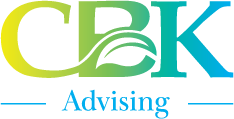How To Know If Your Company Has Staying Power

Karen D. Nutter
Executive Coach
Recently, I read that almost 100,000 businesses have permanently shut down during the pandemic, according to Yelp.com’s Local Economic Impact Report. No wonder so many business leaders (and their employees) are stressed out and fearful. No one was ready for the economic impact the virus would unleash, and it is forcing many leadership teams to wonder if their company has what it takes to make it through these unsettling times and beyond.
Since the financial stability of any business can be a challenge even under the best economies, looking at the numbers on a P&L sheet isn’t really a good indicator of the strength of an organization. If you really want to know if your company has staying power, start by looking at your employees.
Engaged or Dis-engaged?
Employee engagement has been found to be a reliable measuring stick for determining the potential success of a company. In Gallup’s 2020 Q12 study, they found that “businesses scoring in the top half on employee engagement more than doubled their odds of success compared with those in the bottom half.” Additionally, previous studies show that truly successful, “world-class” businesses have 8 engaged employees for every 1 dis-engaged, while average companies only have 1.5 engaged employees for every 1 non-engaged.
So, what does that mean for your organization? Well, that depends – how engaged are your people, and, how do you know? It’s a challenge to truly know how engaged an employee is when you’re working in the same building, and even harder when you have remote team members that you only connect with via web call and email. However, being aware of employee engagement levels not only gives you a good indication of where the company is, it also provides insight into where it’s going.
Employee engagement is determined by a number of internal and external factors and is a direct reflection of how well an employee fits into the company culture. A good “fit” can occur when a team member’s behaviors, motivators, soft skills, and passions align with the vision and mission of the organization. But, to truly have a successful business over the long haul, the organization’s culture must continually inspire, empower, and encourage employees to bring their “A-game.”
A Culture of Engagement
“Take care of your people and they will take care of your customers.” (J. Willard Marriott)
There’s a lot of information published about building a healthy corporate culture by building trust, communicating, being transparent and authentic, and showing appreciation. And, while those are definitely an important part of the process, the best corporate cultures recognize that building a business is about building relationships, and the best place to start is with employees. When people (kids, students, spouses, friends, colleagues) feel like they matter and are cared about, they are more likely to put forth their best effort. This culture-building empathy comes in the form of engaging, listening, and helping them grow. In a corporate environment, this may include frequent team communication sessions, inviting employees to sit on special committees, starting a mentoring program, or offering personal and professional development training. The key to success is in focusing on the relationship-building aspects of your corporate activities. When you do, the culture will build along with it, and engagement will grow. And, when your team engagement grows, profits follow.
Assessing and Increasing Engagement
Until recently, team leaders were often challenged with determining how to increase employee engagement. They would usually look at the team as a whole and try to come up with “fun” ways to improve morale. Unfortunately, this process was usually only mildly successful as it’s impossible to find one solution that fits all employees. Today, we have Engagement Assessments that provide insights into the specific factors that affect an individual’s engagement.
These simple assessments help employees and their team leaders better understand the “How” and “Why” of their actions, and provide tips on how to increase engagement, communicate, and recognize what factors create an ideal environment for peak productivity. Additionally, the report provides awareness into how an individual affects the engagement of the team, as well as other obstacles that may limit engagement.
When combined with employee training programs and culture development, all of this data can be used to help individuals overcome obstacles of engagement, and increase the productivity of the entire organization, even when other imposing factors may be present.
COVID and Engagement
According to Gallup, in 2020, engagement levels have been on a roller-coaster for the first time in twenty years.
% of Highly Engaged:
Pre-COVID – 35%
May 2020 – 38%
June 1-14 – 31%
June – July 12 – 40%
July 13 – Sept. 27th – 36%
While the percent of “Actively disengaged” has remained steady at 13%, this leaves 51% of workers who are not engaged, meaning “they are psychologically unattached to their work and company.” (Gallup.com)
All of this begs the question – If your company is like most, and 51% of your employees are psychologically unattached to their work, how productive can they possibly be, and how likely is it that you have what it takes to succeed – with or without COVID? If it’s not likely, now is a good time to implement an Employee Engagement program that assesses where your team stands and provides training and coaching to help increase your ratio of engaged-to-disengaged employees.
“When people are financially invested, they want a return. When people are emotionally invested, they want to contribute.” ~Simon Sinek
If you would like to take the Engagement Assessment and see first-hand how it works, CLICK HERE to sign up for a free assessment.

